Inbox and Environment News: Issue 352
March 18 - 24, 2018: Issue 352
NSW Government Reintroduces Land-Clearing Law Knowing It Will Accelerate Wildlife Habitat Destruction
March 10, 2018: NSW Nature Conservation
The NSW Nature Conservation condemns the NSW Government’s reintroduction of land-clearing laws that the Land and Environment Court ruled invalid last Friday.
“By waving these laws through a second time without even pausing to consider the consequences, Premier Berejiklian has gone against the wishes of voters and the advice of leading scientists,” NCC CEO Kate Smolski said.
“Ms Berejiklian has also squandered an opportunity to give the state’s 1000 threatened species a fighting chance of survival.
“The government’s action is disappointing but sadly not surprising given its terrible record on the environment and seemingly callous indifference for nature.
“These laws are literally a matter of life and death for native animals and should have been redrafted to include significantly stronger environmental protections before they were introduced.
“The government’s own experts have warned 99% of koala habit on private land is left exposed to clearing by these laws and that there would be a spike in tree loss of up to 45%.
“As the state’s peak environment organisation, we will continue to do everything we can to expose the damage of land clearing and will not stop until we have laws that give nature the protection it deserves.”
Visit: Berejiklian Government Allows Open Slather On Wildlife by Sue Arnold This week's Issue
March 10, 2018: NSW Nature Conservation
The NSW Nature Conservation condemns the NSW Government’s reintroduction of land-clearing laws that the Land and Environment Court ruled invalid last Friday.
“By waving these laws through a second time without even pausing to consider the consequences, Premier Berejiklian has gone against the wishes of voters and the advice of leading scientists,” NCC CEO Kate Smolski said.
“Ms Berejiklian has also squandered an opportunity to give the state’s 1000 threatened species a fighting chance of survival.
“The government’s action is disappointing but sadly not surprising given its terrible record on the environment and seemingly callous indifference for nature.
“These laws are literally a matter of life and death for native animals and should have been redrafted to include significantly stronger environmental protections before they were introduced.
“The government’s own experts have warned 99% of koala habit on private land is left exposed to clearing by these laws and that there would be a spike in tree loss of up to 45%.
“As the state’s peak environment organisation, we will continue to do everything we can to expose the damage of land clearing and will not stop until we have laws that give nature the protection it deserves.”
Visit: Berejiklian Government Allows Open Slather On Wildlife by Sue Arnold This week's Issue
Nominating A Species, Ecological Community Or Key Threatening Process Under The EPBC Act
Any person may nominate a native species, ecological community or threatening process for listing under any of the categories specified in the Environment Protection and Biodiversity Conservation Act 1999 (EPBC Act).
An overview of the nomination and listing process is provided in the nomination process flowchart.
An invitation to nominate is extended by the Minister each year ahead of a new assessment cycle. Nominations submitted within the advertised invitation period and that satisfy the EPBC Regulations are forwarded to the Threatened Species Scientific Committee (the Committee), who prepare a Proposed Priority Assessment List (PPAL) of nominations for consideration by the Minister. The PPAL may include species that are nominated by states and territories through the common assessment method process.
Developing the proposed priority assessment list of nominationsThe Minister considers the PPAL developed by the Committee and may make changes. The Finalised Priority Assessment List (FPAL) is published on this website and nominators will be notified of the outcome.
Nominations included in the FPAL are assessed by the Committee within the timeframe set by the Minister. The Committee will invite public and expert comment on these nominations during the assessment period.
Comment on nominationsThe Committee's advice is forwarded to the Minister, who decides whether the species, ecological community or key threatening process is eligible for listing under the EPBC Act.
For a comprehensive understanding of the provisions relating to nominations and listing, please refer directly to the EPBC Act and Regulations.
Environment Protection and Biodiversity Conservation Act 1999 Environment Protection and Biodiversity Conservation Regulations 2000
Nominations are now invited for threatened species, threatened ecological communities or key threatening processes to be considered for listing under the Environment Protection and Biodiversity Conservation Act 1999.Nominations may be submitted until 5 pm on Friday 30 March 2018. For further information regarding the call for nominations, emailEPBC.nominations@environment.gov.au. The priorities for assessment will be determined in July 2018, and the assessment period for the prioritised nominations will commence 1 October 2018.
Before submitting a nominationPlease note and use the nomination forms and guidelines provided here. Before you submit a nomination for a species, ecological community or key threatening process, please check to see if it is 1) already listed on a current EPBC Act list, 2) currently under assessment, 3) previously assessed and found to be ineligible, 4) data deficient species, 5) removed from the EPBC Act lists, 6) not prioritised for assessment or 7) disallowed from the EPBC Act lists. For ecological community nominations also refer to the list of potential gaps in national protection identified in the report of the National Threatened Ecological Communities Strategic Workshop
Review Of The Carbon Credits (Carbon Farming Initiative) (Native Forest From Managed Regrowth) Methodology Determination 2013
The Emissions Reduction Assurance Committee has commenced a review of the Native Forest from Managed Regrowth method.
Method reviews are undertaken to ensure ERF methods continue to meet the scheme’s offsets integrity standards, including that emissions reductions credited through the scheme remain genuine and additional.
Public consultationThe Committee invites written submissions from the public to inform its review of the Native Forest from Managed Regrowth method.
The Committee has released a discussion paper to support the review. The discussion paper provides information on the methods, and issues submissions may wish to consider.
The public consultation period commenced on 2 March 2018 and will rununtil 13 April 2018. Further information about making a submission is provided here.
The Committee has also commenced a review of the Human-Induced Regeneration method. The discussion paper also refers to the review of this method.Bushcare in Pittwater
For further information or to confirm the meeting details for below groups, please contact Council's Bushcare Officer on 9970 1367
BUSHCARE SCHEDULES
Where we work Which day What time
Avalon
Angophora Reserve 3rd Sunday 8:30 - 11:30am
Avalon Dunes 1st Sunday 8:30 - 11:30am
Avalon Golf Course 2nd Wednesday 3 - 5:30pm
Careel Creek 4th Saturday 8:30 - 11:30am
Toongari Reserve 3rd Saturday 9 - 12noon (8 - 11am in summer)
Bangalley Headland 2nd Sunday 9 to 12noon
Bayview
Winnererremy Bay 4th Sunday 9 to 12noon
Bilgola
North Bilgola Beach 3rd Monday 9 - 12noon
Algona Reserve 1st Saturday 9 - 12noon
Plateau Park 1st Friday 8:30 - 11:30am
Church Point
Browns Bay Reserve 1st Tuesday 9 - 12noon
McCarrs Creek Reserve Contact Bushcare Officer To be confirmed
Clareville
Old Wharf Reserve 3rd Saturday 8 - 11am
Elanora
Kundibah Reserve 4th Sunday 8:30 - 11:30am
Mona Vale
Mona Vale Beach Basin 1st Saturday 8 - 11am
Mona Vale Dunes 2nd Saturday+3rd Thursday 8:30 - 11:30am
Newport
Bungan Beach 4th Sunday 9 - 12noon
Crescent Reserve 3rd Sunday 9 - 12noon
North Newport Beach 4th Saturday 8:30 - 11:30am
Porter Reserve 2nd Saturday 8 - 11am
North Narrabeen
Irrawong Reserve 2nd Saturday 2 - 5pm
Palm Beach
North Palm Beach Dunes 3rd Saturday 9 - 12noon
Scotland Island
Catherine Park 2nd Sunday 10 - 12:30pm
Elizabeth Park 1st Saturday 9 - 12noon
Pathilda Reserve 3rd Saturday 9 - 12noon
Warriewood
Warriewood Wetlands 1st Sunday 8:30 - 11:30am
Whale Beach
Norma Park 1st Friday 9 - 12noon
Western Foreshores
Coopers Point, Elvina Bay 2nd Sunday 10 - 1pm
Rocky Point, Elvina Bay 1st Monday 9 - 12noon
Bushcare in Pittwater
Where we work Which day What time
Avalon
Angophora Reserve 3rd Sunday 8:30 - 11:30am
Avalon Dunes 1st Sunday 8:30 - 11:30am
Avalon Golf Course 2nd Wednesday 3 - 5:30pm
Careel Creek 4th Saturday 8:30 - 11:30am
Toongari Reserve 3rd Saturday 9 - 12noon (8 - 11am in summer)
Bangalley Headland 2nd Sunday 9 to 12noon
Bayview
Winnererremy Bay 4th Sunday 9 to 12noon
Bilgola
North Bilgola Beach 3rd Monday 9 - 12noon
Algona Reserve 1st Saturday 9 - 12noon
Plateau Park 1st Friday 8:30 - 11:30am
Church Point
Browns Bay Reserve 1st Tuesday 9 - 12noon
McCarrs Creek Reserve Contact Bushcare Officer To be confirmed
Clareville
Old Wharf Reserve 3rd Saturday 8 - 11am
Elanora
Kundibah Reserve 4th Sunday 8:30 - 11:30am
Mona Vale
Mona Vale Beach Basin 1st Saturday 8 - 11am
Mona Vale Dunes 2nd Saturday+3rd Thursday 8:30 - 11:30am
Newport
Bungan Beach 4th Sunday 9 - 12noon
Crescent Reserve 3rd Sunday 9 - 12noon
North Newport Beach 4th Saturday 8:30 - 11:30am
Porter Reserve 2nd Saturday 8 - 11am
North Narrabeen
Irrawong Reserve 2nd Saturday 2 - 5pm
Palm Beach
North Palm Beach Dunes 3rd Saturday 9 - 12noon
Scotland Island
Catherine Park 2nd Sunday 10 - 12:30pm
Elizabeth Park 1st Saturday 9 - 12noon
Pathilda Reserve 3rd Saturday 9 - 12noon
Warriewood
Warriewood Wetlands 1st Sunday 8:30 - 11:30am
Whale Beach
Norma Park 1st Friday 9 - 12noon
Western Foreshores
Coopers Point, Elvina Bay 2nd Sunday 10 - 1pm
Rocky Point, Elvina Bay 1st Monday 9 - 12noon
Native Duck Slaughtering Season Opens In Victoria - Shooters Already Murdering Native Birds In Tasmania And South Australia
Catosptrophic Of Tasmania's Waterfowl Populations Ahead Of Annual Shooting Season
March 12, 2018: BirdLife Tasmania
BirdLifeTas releases new data showing catastrophic declines in waterfowl & no real law enforcement at shooters' main venue, Moulting Lagoon, as new season opens.
Analyses by BirdLife Tasmania of DPIPWE waterfowl counts at Moulting Lagoon have identified ‘catastrophic’ decreases in four of the waterfowl species that can be shot legally in Tasmania. The four species investigated were Mountain Duck, Black Duck, and Chestnut and Grey Teals. A fifth species that can be shot in Tasmania (Wood Duck) is rarely recorded at Moulting Lagoon, and was excluded from analyses.
BirdLife Tasmania examined the data for 15 years – between 2001 and 2015 inclusive, and calculated the difference between peak counts for each species and current counts.
“The differences between maxima and current counts varied from decreases of 62% (Mountain Duck) to 97% (Grey Teal)” Dr Eric Woehler, BirdLife Tasmania Convenor said today.
“Black Duck (-71%) and Chestnut Teal (-81%) also showed catastrophic decreases,” Dr Woehler added.
“The Tasmanian Government acknowledges that Tasmania acts as a refuge for mainland waterfowl, noting that waterfowl cross Bass Strait and shelter in Tasmania’s wetlands until mainland conditions improve for them, yet they allow these birds to be shot,” Dr Woehler noted.
The 2017 take of 58,000 ducks was 27% higher than in 2016, with almost 1200 shooters reporting an average of 50 ducks each. “In light of the recent reports on duck mismanagement in Victoria, where the State Government is unable to enforce hunting restrictions, BirdLife Tasmania believes a similar situation exists in Tasmania. Almost certainly, the real take is higher than that reported to authorities” Dr Woehler said.
“Following a Right to Information request from BirdLife Tasmania, the Tasmanian Government was forced to admit that only 1 prosecution and 1 infringement notice had been issued in the past 6 years, with annual numbers of shooters typically around 1000,” Dr Woehler said.
“It beggars belief that no non-target species have been shot, and it’s an indication of how passively the Tasmanian duck hunt is currently managed by the Government when all they can say is that, ‘none reported’” Dr Woehler added.
“The Tasmanian Government is taking a ‘hands-off’ approach to waterfowl management in Tasmania”.
“Shooting species whose populations have decreased between 62% and 97% can not be described as “sustainable”, no matter how much political spin is attached,” Dr Woehler added.
“Stopping this unsustainable and indefensible ‘sport’ in Tasmania is long overdue, and the Tasmanian Government must act immediately to protect our waterfowl rather than giving hunters free rein.” Dr Woehler concluded.
Duck shooting is already banned in 3 Australian states. Help ban it nationwide!At 11.30 am, March 17th, 2018: the Coalition Against Duck Shooting was live (video on facebook).A bird has come in and our vet team is assessing the injuries. She is a Blue-winged shoveler — protected & illegal to shoot this season.The Blue-winged shoveler had to be euthanised due to injuries that could not be healed; the video is too distressing, in light of our younger audience, to make a record of here - Laurie Levy, on his 32nd year of duck rescue, speaks from Lake Cullen, where he is/was yesterday, March 17th, 2018, on how many wetlands are being stalked by bird murderers in Victortia for the next three months.
Why Duck Shooting Season Still Isn’t On The Endangered List
March 15, 2018by Siobhan O'SullivanSenior Lecturer in Social Policy, UNSWOn March 17, the 2018 duck shooting session will open in Victoria. The first shots were fired in Tasmania and South Australia last weekend. The Northern Territory allows certain types of bird shooting later in the year. Duck shooting is prohibited in the rest of Australia.
States and territories have jurisdiction over duck shooting. In Victoria a new raft of regulations has been introduced to try to limit the damage to the state’s wetlands. One change of note in Victoria is that this year the Blue-winged Shoveler cannot be legally shot due to the low numbers of the species.
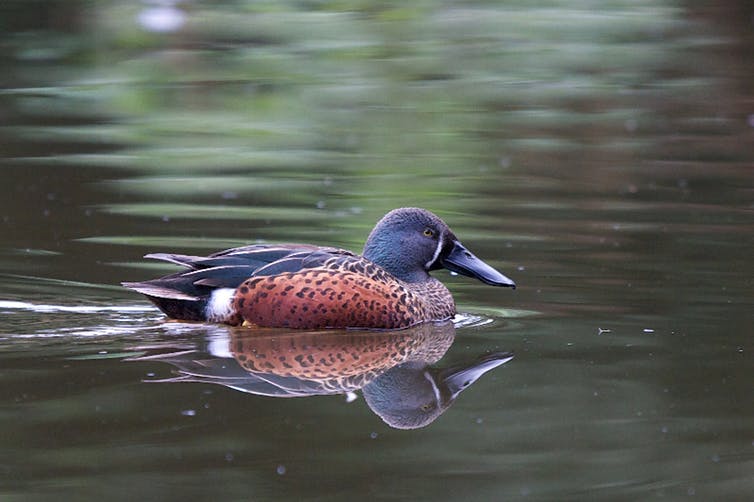
The Blue-winged Shoveler has been added to the protected list in Victoria this year for the first time. Flickr CC
Other new regulations require that hunters recover the birds they shoot. This rule serves to formalise what Victoria’s Game Management Authority (GMA)refers to as “standard practice for responsible hunters”.
However, in most other respects Victoria’s 2018 duck season will look almost indistinguishable from previous years. It will still be three months long, with a “bag limit” of ten birds per person per day.
In Tasmania, authorities postponed the shooting start time in 2018, among a raft of other minor amendments.
In fact, the various states regularly make minor changes to the rules. Hundreds of minor adjustments have been made over many decades. While these changes may seem significant, from a broad socio-legal perspective they do little to challenge the status quo.
Playing by the rules?A GMA-commissioned review by Pegasus Economics last year documented regular instances of duck shooters behaving irresponsibly. The independent report concluded that “non-compliance with hunting laws is commonplace and widespread”.
The ABC has aired allegations that unsustainable hunting is on the rise and that regulators feel unable to enforce the rules. It revealed pits containing around 200 unrecovered shot birds from the 2017 opening weekend at Victoria’s Koorangie State Game Reserve alone.
Activists interviewed in the report claimed to have brought out 1,500 dead birds from the wetlands. Of these, 296 were protected species, including 68 endangered Freckled Ducks.
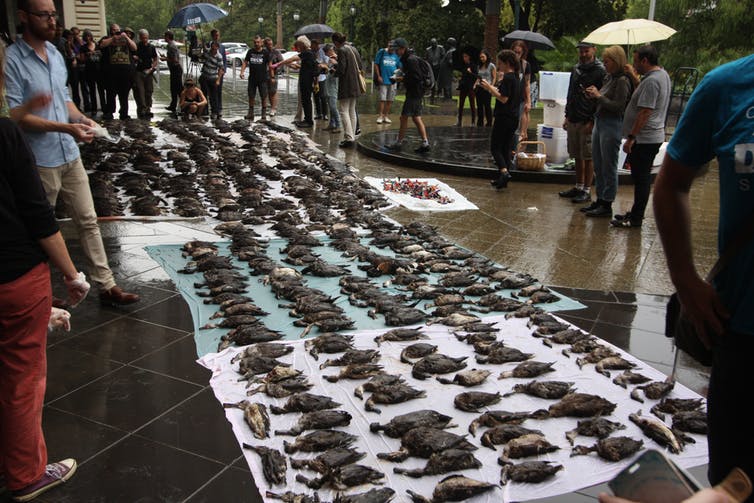
A supplied image of over 800 native waterbirds, including 68 threatened Freckled Ducks, displayed outside the premier’s office at 1 Treasury Place, Melbourne, by the Coalition against Duck Shooting on March 20, 2017. AAP
In my book Animals, Equality and Democracy, I argue that there is a generalised tendency for animal welfare laws to be more effective for socially visible animals. Laws that govern the welfare of zoo animals have improved much more quickly, for example, than those that cover animal welfare in factory farms.
Duck shooting is not a highly visible cause of animal harm. Relatively few people live near the wetlands where shooting takes place. But animal advocates have been effective in making it visible, despite laws that limit their ability to do so.
Elaborate events such as Duck Lake, in which animal activists performed their own version of Swan Lake on the opening morning of the 2016 Tasmanian duck shooting season, help generate media attention.
In 2017, long-time Victorian anti-duck-shooting campaigner Laurie Levy from the Coalition Against Duck Shooting was once again fined for entering the water to help an injured bird. While such activities go some way in generating public visibility, they have thus far not been able to stop duck shooting outright.
The gun lobby’s growing influence in AustraliaAt present, only 28,000 Australians are registered duck shooters. According to 2012 Australia Institute analysis, 87% of Australians support a ban on duck shooting. There is mounting evidence that endangered and non-game species are also being killed.
Before being re-elected at this month’s Tasmanian state election, the Liberal state government promised to soften the state’s gun laws. It alsocommitted to “always protect the right of Tasmanians to safely and responsibly go recreational shooting”.
In Victoria the picture is a little more complex. A 2016 report asserted that most members of the state’s Labor Party oppose duck shooting and that the Andrews government’s continued support may cost it votes.
Indeed, despite the pressure from within the ALP, the daily bag limit for the 2018 season is ten, compared with just four in 2016.
‘Industry capture’ reinvigorating duck shooting
The Pegasus Economics review identifies “industry capture” as a significant factor in the continuation of duck hunting. Industry capture refers to a situation in which industry has a disproportionately close and influential relationship with policymakers compared with other relevant stakeholders.
The decision by the Tasmanian Liberal Party to share details of its proposed softened gun laws with shooters and farmers, and not other interested parties or the public, suggests industry capture is a genuine factor in Tasmania too.
With widespread community opposition ranged against the entrenched interests of the shooters themselves, state governments will need to make some big calls on the future of duck hunting, rather than the current tinkering around the edges.
First published in The Conversation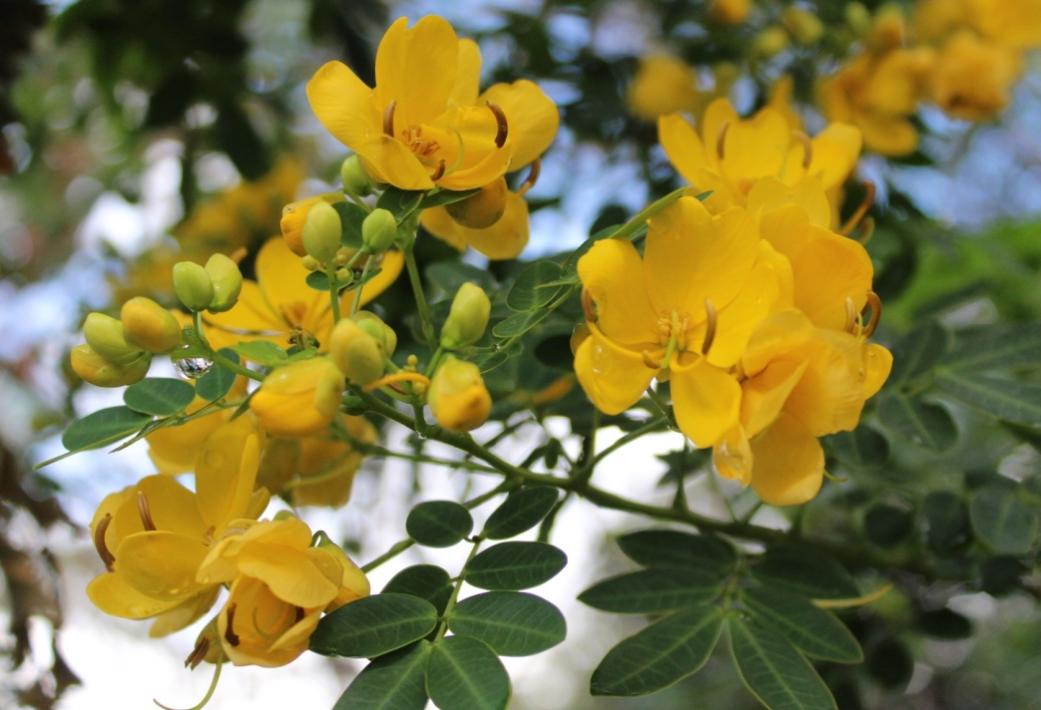 Cassia (Senna pendula). Also known as Senna and Arsenic Bush. Originating in South American, Cassia is a perennial sprawling multi-stemmed shrub or tree up to 5m tall.
Cassia (Senna pendula). Also known as Senna and Arsenic Bush. Originating in South American, Cassia is a perennial sprawling multi-stemmed shrub or tree up to 5m tall.
This weed replaces native vegetation and establishes in a wide range of native plant communities, including coastal heath and scrubland, hind dunes and riparian corridors. The large seed pods are eaten by birds and other animals which spreads the weed further.
Currently flowering - please pull out and get rid of if you have in your garden or join a local Bushcare Group to help Pittwater rid itself of this weed.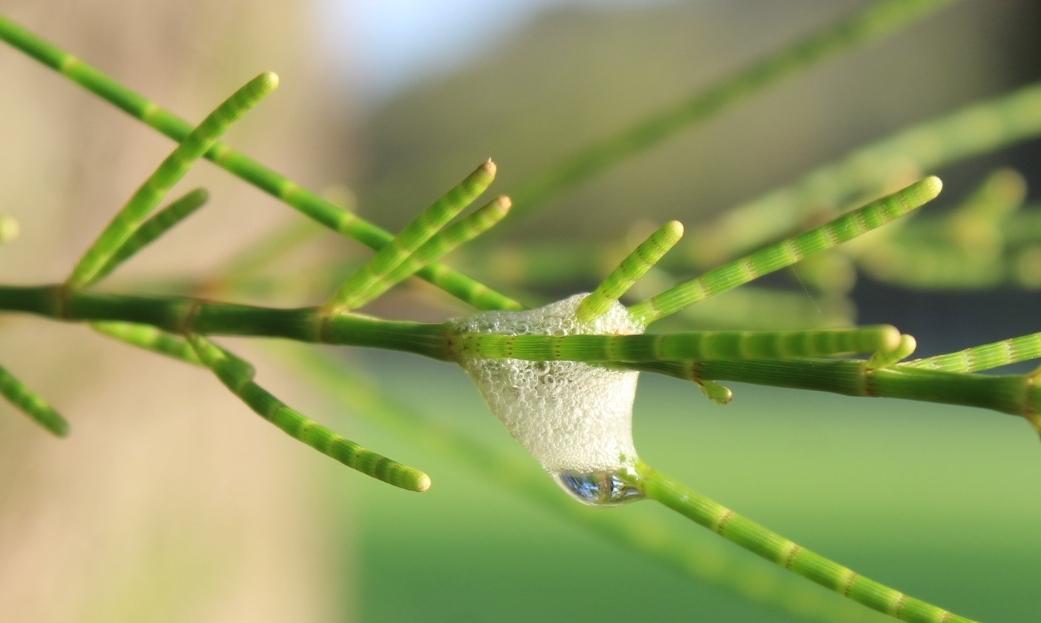 Spittlebug infestation in She oaks, Careel Bay, this week.___________________________________________________________________________________________________________________
Spittlebug infestation in She oaks, Careel Bay, this week.___________________________________________________________________________________________________________________




Urban Play In Urban Parks
Spotted....somewhere in Pittwater
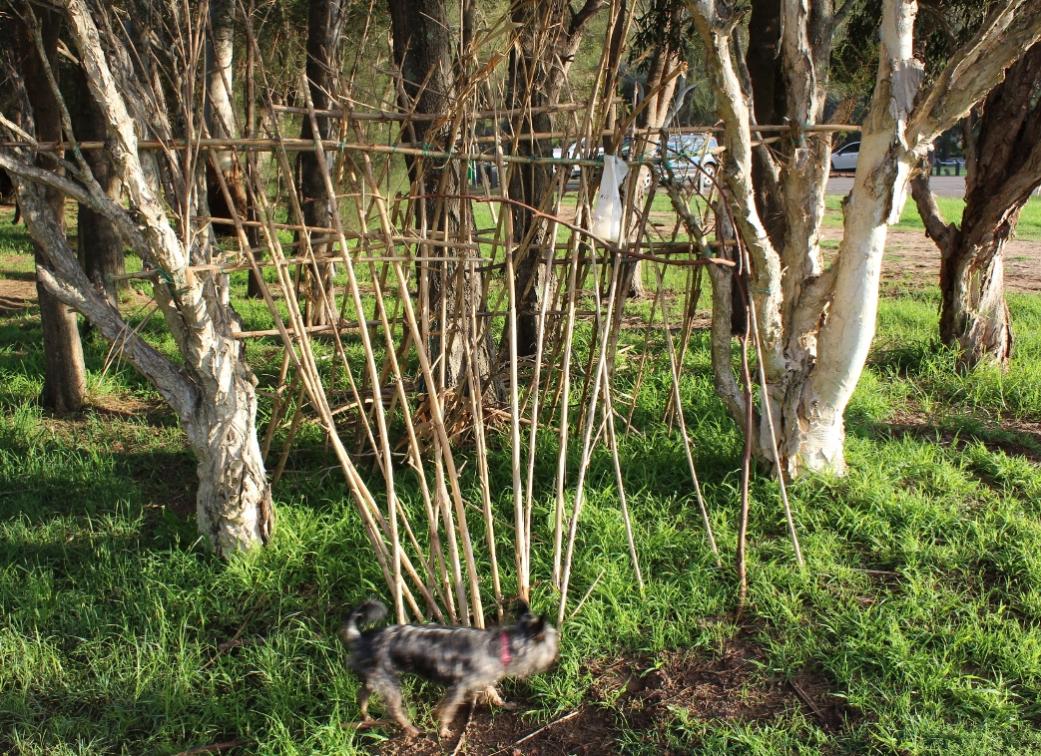
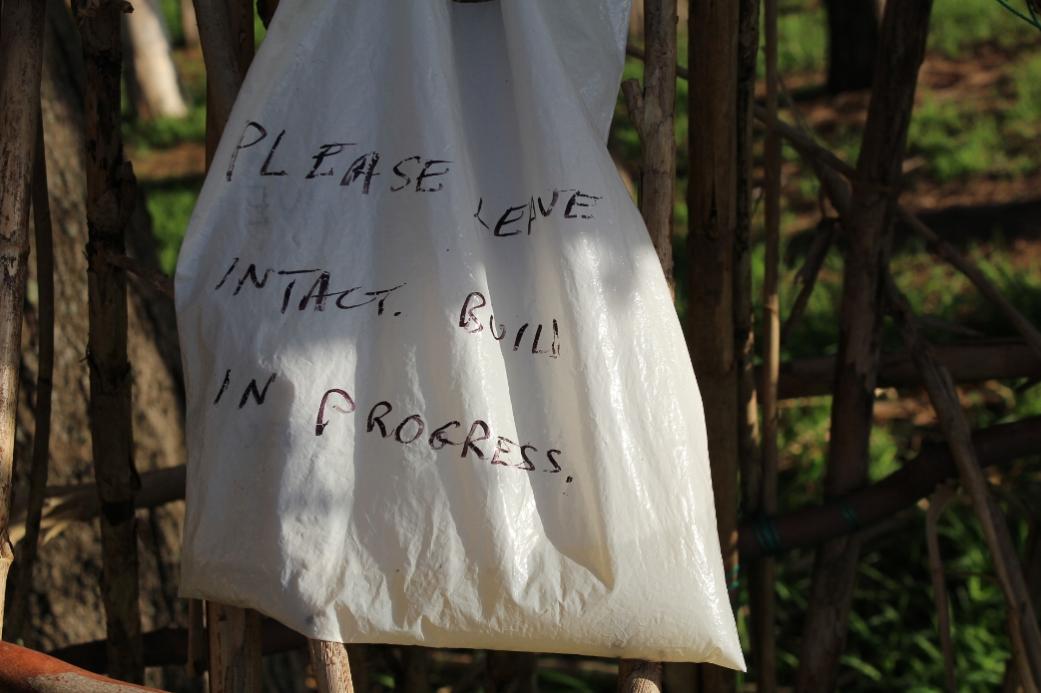


Australians Want Community Consent On Mining
March 13, 2018: CSIROA new national survey on citizen attitudes toward mining shows that three-quarters of Australians think mining companies should gain consent from local communities before development.
The CSIRO report also shows that while most Australians accept mining and hold positive views about its role in contributing to the nation's economy, they hold low levels of trust in in the industry, don't feel they have a voice in shaping the industry's practices or faith in the governance surrounding mining.
CSIRO surveyed 8020 Australians on their attitudes toward mining. Participants were over the age of 18 living in mining regions, non-mining regions and metropolitan areas.
"In Australia in recent years, the types of conversations we've had about mining haven't always been constructive," CSIRO social scientist, Dr Kieren Moffat, said.
"What's been lacking in these discussions – about a resource base that's managed on behalf of Australian citizens – is the citizens' voice.
"We want to promote a conversation about mining that goes a lot deeper and brings that voice directly to the table."
The top perceived benefits of mining are job creation and employment opportunities, which outweigh the top perceived negative impacts to the environment and water quality.
This balance of benefits over negative impacts is considered a strong driver of Australians' general acceptance of the mining industry.
"These results aim to give mining companies, government and communities a deeper understanding of the factors that lead to acceptance of the industry and the critical elements that develop trust between the community and industry," Dr Moffat said.
Australia is one of the world's top resource producers. Iron ore continues to be Australia's biggest export earner, contributing tens of billions of dollars each year to the nation's economy.
Yet with increasing community expectations, it's vital to the industry's future that it maintains a social licence to operate.
"What remains consistent throughout all our social research is that trust is central to building strong relationships between industry and the communities they work alongside," Dr Moffat said.
"The challenge is that trust is low across the board. Our work at the national and local scales in mining communities demonstrates that there are very tangible, practical ways that mining companies and industry can address this trust deficit."
The results form part of a global database on attitudes to mining, which includes the results of citizen surveys conducted in China, Chile, Finland and Zambia and aims to help the industry improve its social performance.View the results or download the report at: www.csiro.au/attitudestomining
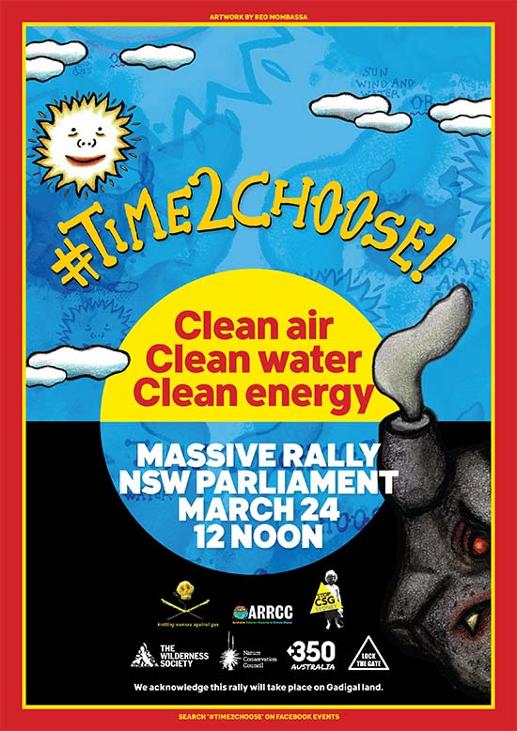

Time To Choose
A community family friendly rally for clean air, water and energy.
Participants will be joined by concerned citizens from all over the state including farmers, horses from the hunter, musician from Tamworth and of course the Knitting Nannas. Catch a bus from Mona Vale at 10.30. Walk to Parliament House for a 12pm start.
A tragedy in the making. Stand up for the future of for the great artesian basin, our inland forests, the health of farmland and rural families.
Your voice can make a difference. Hope to see you there
Turquoise Parrot – Capertee Valley
Published on 17 Mar 2018 by Birds In Back Yard TV (BIBY)
This female Turquoise Parrot (Neophema pulchella) was filmed in March 2018 in the Glen Alice area of Capertee Valley, NSW. Not only is this valley a geological wonder – indeed, it’s been described as the second-largest canyon in the world (wider than the Grand Canyon but not as deep or long) – it’s also one of the best places in Australia to see birds. Moreover, it is recognised internationally as an Important Bird Area (IBA). The diversity of habitats within the valley and surrounds (e.g. Wollemi National Park) support many bird species, including those in decline elsewhere.
The story of the Turquoise Parrot is less straightforward. While this parrot was once common (including within the Sydney region) and it is now described as vulnerable in NSW and threatened in Victoria, the situation isn’t as dire as it was by the early 1900s. Large numbers had been captured for the caged bird industry or shot for food; by 1915 it was feared that the Turquoise Parrot was extinct or near extinct in the wild. Habitat loss was also a major part of their tumbling population. But by the 1930s they were re-colonising parts of NSW and southern Queensland, and were seen again in Victoria by the 1950s. For more on this fascinating tale of decline and resurgence see http://www.birdlife.org.au/australian...
For further information on this beautiful bird visithttp://www.birdsinbackyards.net/speci...
Paintback Collection Event: Johnson Bros Mitre 10 Mona Vale
Saturday, April 7 at 8 AM - 4 PM
73 Bassett St, Mona Vale
The problem of unwanted paint & packaging has been solved. Trade painters and householders are invited to dispose of unwanted paint and packaging responsibly at the following collection event.
Mona Vale Collection EventDate: April 7, 2018Time: 8am to 4pmLocation: Johnson Bros Mitre 10, 73 Bassett Street Mona Vale, NSW 2103Drop off is FREE
For more info on Paintback go to paintback.com.au.
Paintback accepts up to 100 litres per visit, secured in containers of 20 litres or less.


New Stop Adani Film "A Mighty Force"
Hosted by Knitting Nannas of PittwaterThursday, March 22 at 7 PM - 9 PMCoastal Environment Centre, Lake Paark Rd, Narrabeen
Hi Everyone, We are screening the new Stop Adani Film, "A Mighty Force" at The Coastal Environment Centre, Lake Park Road, Narrabeen, on Thursday 22nd March at 7pm. It is a great film about all the terrific people fighting Adani and what is happening. We all need to keep pushing to stop this disastrous mine. So do come and join us at the film screeniing. $5 at the door, wine and cheese snacks included. R.S.V.P Here!
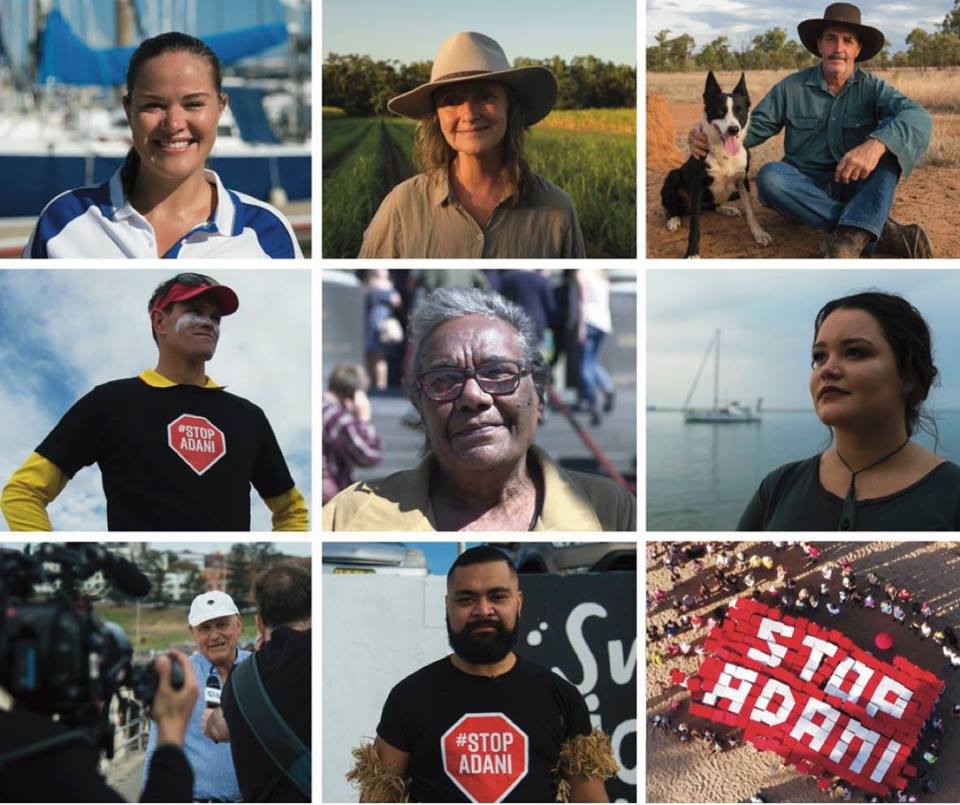

Zest For Life Festival
Hosted by Avalon Community GardenSunday, April 8 at 10 AM - 2 PMIn the Grounds of Barrenjoey High School, via Tasman Road gates, North Avalon.Add some zest to your life at Avalon Community Garden. Hear amazing legends speak about their passion for the planet, for soil, for plastic free living, caring for the Oceans and much more.
Indulge in the Garden’s Natural Food Café, open all day for lunch, organic produce, tea, coffee and cakes. Relax listening to some cool beats from a bevy of Avalon’s talented performers.
For the kids there is craft & painting, music al entertainment, gardening and their own café!
Take a tour through the Garden grounds whilst visiting our eco partners’ stalls. Plus a day of eco workshops, films, talks and fun activities:
10:10 Smoke ceremony and welcome to country Neil Evers - Aboriginal elder of the Guringai people.
11:00 The Importance of Soil talk Peter Rutherford - Eco House and Garden, Kimbriki.
11:30 Making Compost From Food Scraps workshop. Tim Seaton - Coastal Environment Centre / ACG.
12:00 No Plastic Please talk. Robbie Luscombe-Newman – Living Ocean.
12:30 Plastic Free Lifestyle film - Living Ocean.
12:30 Aspara Gus entertains the kids Luke Escombe - The Veggie Plot.
1:00 No more gladwrap on your sangers – make your own beeswax wrap workshop.Tim Seaton – The Coastal Environment Centre / ACG.
1:30 Make your own essential oil sunscreen workshop. Phyllis Agius – ACG.
1:30 Make and retain good soil on steep sites using Hugelkulture method. Sam Gibbons – ACG.
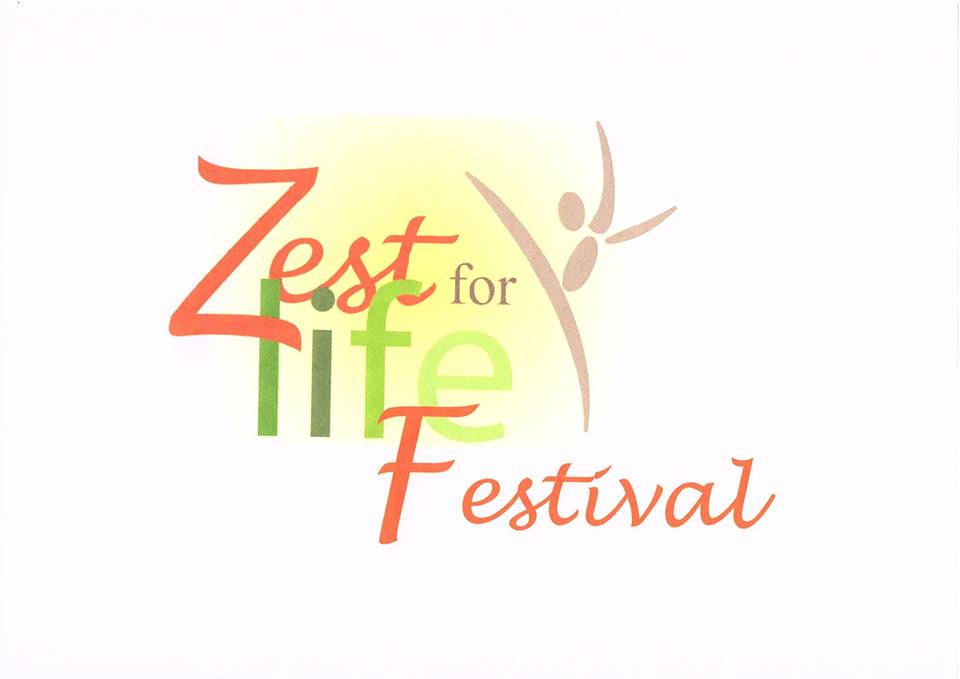

Please Help: Contribute To Significant Trees Register For Our Area
Significant trees listings wanted
February 28, 2018: Avalon Preservation AssociationThe next step in the Avalon Preservation Association's Avalon Cultural Audit is to identify and list significant trees in the area.
Roger Sayers has nominated the Spotted Gums in the reserve opposite Careel Bay Wharf.
Please help us by contributing your pick of significant trees in the area so we can map them and enter into our database.
You can either post a picture/s on the APA Facebook page and identify location of tree/s and species type if known or email us with same atsecretary@avalonpreservationassociation.org.au
Our new Avalon Preservation Association Noticeboard is finally installed on corner of Belle Property Building near Herforts Chemist Old Barrenjoey Rd Avalon Beach. Many thanks to Mark Griffin Belle Property for use of wall and Robert Adema for installation.
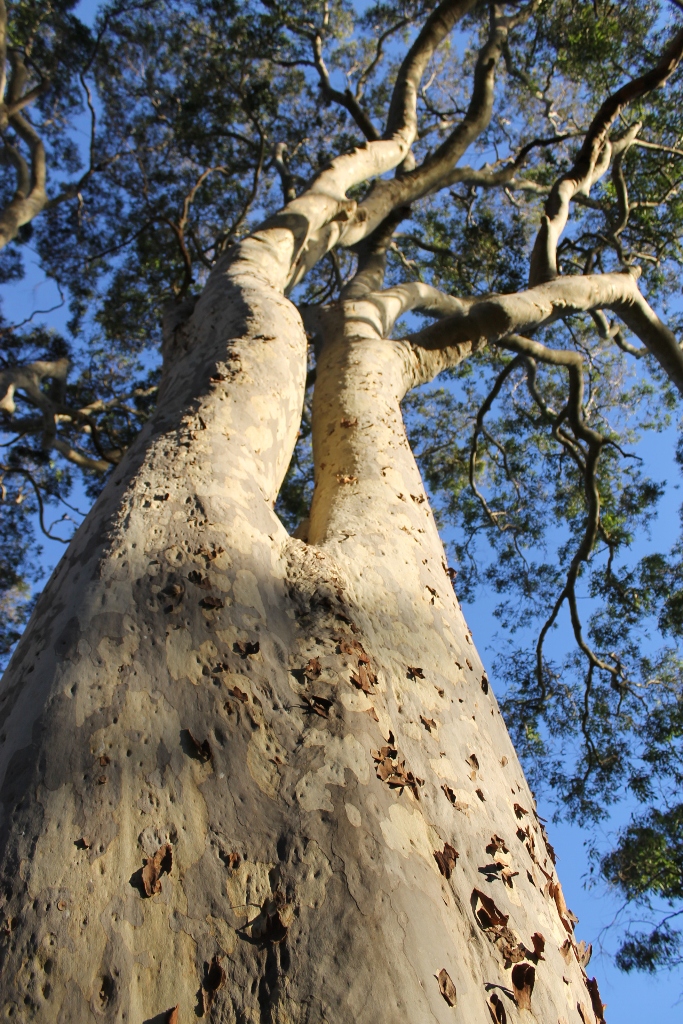

Russell Vale Colliery (Formerly The 'NRE No. 1 Mine'); Preliminary Works Project Modification 4 Bellambi Creek Gully
Modifications to the Russell Vale Colliery Preliminary Works Project Approval regarding requirements for works on Bellambi Creek GullyExhibition Start 16/03/2018Exhibition End 30/03/2018Documents at and Have your say;majorprojects.planning.nsw.gov.au/index.pljob_id=9183
Austen Quarry Extension - Mod 1
Various conditions of consent would be modified under the proposed modifications that include: 1. Modification to the annual product despatch limits and associated truck limits. 2. Modification to the hours of operations for product loading and despatch. 3. realignment of the extraction area 4. Modification to the final extent of the overburden emplacement. 5. Modification to the wording of conditions relating to biodiversity offsetting See included Statement of Environmental Effects for more details.
Exhibition Start 14/03/2018Exhibition End 10/04/2018
Documents and have your say at:
Draft Plans Of Management For NSW Reserves, State And National Parks: Have Your Say
The Mother of Ducks Lagoon Nature Reserve Draft Plan of Management is now available for review and comment.Public exhibition of the draft plan provides an important opportunity for members of the community to have a say in the future management of Mother of Ducks Lagoon Nature Reserve.
The draft plan of management is on public exhibition until 18 June 2018and anyone can review the plan and provide comments.
The Queens Lake Nature Reserve and Queens Lake State Conservation Area Draft Plan of Management is available for public review and comment. The exhibition of the draft plan provides an opportunity for members of the community to have a say in future management directions for the park. Submissions must be received by 9 April 2018.
The Yanga National Park, Yanga State Conservation Area and Yanga Nature Reserve Draft Plan of Management is available for public review and comment. The exhibition of the draft plan provides an important opportunity for members of the community to have a say in future management directions for the park. Submissions must be received by 23 April 2018.
The Toorale National Park and Toorale State Conservation Area Draft Plan of Management is available for public review and comment. The exhibition of the draft plan provides an important opportunity for members of the community to have a say in future management directions for the parks. Submissions must be received by 7 May 2018.
The Bobbiwaa Parks Draft Plan of Management covers Bobbiwaa State Conservation Area, Couradda National Park, Killarney State Conservation Area and Moema National Park and is now available for public review and comment. The exhibition of the draft plan provides an important opportunity for members of the community to have a say in future management directions for these parks. Submissions must be received by 21 May 2018.
Update On Baleen 2D HR Seismic Survey
(The survey comprises 46 2D lines of total length 208km.) - NOPSEMA 'Not reasonably satisfied – opportunity to modify EP'Decision date: 03/08/2017 Titleholder action Resubmission due date 3: 02/09/2017Extension of timeframe: 17/08/2017 Titleholder action: 15/10/2017
Extension of timeframe: 05/10/2017 Titleholder action: 31/10/2017
Resubmission of EP: 31/10/2017 NOPSEMA decision: 30/11/2017
Request for further information: 30/11/2017 Titleholder action: 21/12/2017
Acceptance of EP: 10/01/2018 Titleholder action: 20/01/2018Decision notification (PDF 707 KB)
Submission of EP summary 19/01/2018 NOPSEMA decision 29/01/2018
Publication of EP summary 16/02/2018 - (not published/available at this date or yet - 25/2/2018)
Visit:
And NOPSEMA page: Baleen 2D HR Seismic Survey: Asset Energy Pty Ltd - also: Decision notification (PDF 137 KB)
From Decision notification:Basis of decision NOPSEMA has assessed the environment plan in accordance with its assessment policies and procedures.
On completion of assessment, NOPSEMA has decided that it is not reasonably satisfied that the environment plan meets the criteria below as set out in regulation 10A of the Environment Regulations: (a) is appropriate for the nature and scale of the activity (b) demonstrates that the environmental impacts and risks of the activity will be reduced to as low as reasonably practicable (c) demonstrates that the environmental impacts and risks of the activity will be of an acceptable level (d) provides for appropriate environmental performance outcomes, environmental performance standards and measurement criteria (e) includes an appropriate implementation strategy and monitoring, recording and reporting arrangements (g) demonstrates that: (i) the titleholder has carried out the consultations required by Division 2.2A (ii) the measures (if any) that the titleholder has adopted, or proposes to adopt, because of the consultations are appropriate
Titleholder requirements For OMR decision In accordance with regulation 10, the titleholder is required to modify and resubmit the environment plan. Upon resubmission of the plan, NOPSEMA will continue to assess the submission in accordance with its assessment policies and make a decision under regulation 10. After a titleholder has been provided with reasonable opportunity to modify and resubmit an environment plan, NOPSEMA will make a final decision on whether to accept or refuse to accept the environment plan.
National Offshore Petroleum Safety and Environmental Management Authority (NOPSEMA) regulates all offshore areas in Commonwealth waters, which comprise those areas beyond the first three nautical miles of the territorial sea. This includes the Ashmore and Cartier offshore territories and offshore areas adjacent to all states and the Northern Territory.
NOPSEMA also regulates all offshore areas in coastal waters where a state or territory has conferred regulatory powers and functions. In jurisdictions where powers to regulate are not conferred, regulatory responsibilities remain with the relevant state or territory.
No Gas Drilling Off Newcastle Petition
Gas company Advent Energy has approval to start seismic exploration for oil and gas off the coast from Newcastle and the Central Coast.
Seismic exploration creates sonic underwater blasts that puts marine wildlife at risk, including migrating whales, and impacts productive local fishing grounds.
If Advent Energy finds gas, the next step will be a push for an oil and gas field off the coast off Newcastle and the Central Coast. That's a proposition the local community will never accept.
It’s not worth risking the health of the marine environment, our valuable fisheries resources and the local jobs it sustains for oil and gas exploration where the community will never accept a future gas field.
Sign the petition to say NO GAS DRILLING OFF NEWCASTLE:Dear The Premier of NSW.,
I oppose seismic exploration off the coast of Newcastle and the Central Coast and call on your Government to take steps to cancel the existing exploration licence and ban future offshore oil and gas development in NSW.
1. Seismic exploration has been shown to impact on the hearing and navigation of whales and negatively impact on marine habitat and biodiversity.
2. Offshore oil and gas exploration and drilling puts at risk local fishing and tourism industries that rely on a healthy oceans and a vibrant marine and coastal environment.
3. An oil spill off the coast between Sydney and Newcastle could be catastrophic. The risk of oil and gas leaks and spills has been shown around Australia and the world. No matter the quality of regulations, accidents happen. The risk is unacceptable.
4. NSW should be pursuing clean renewable energy, not more polluting and risk fossil fuel.
Australian Scientists Helping To Improve Understanding Of Plate Tectonics
March 14, 2018: Australian National UniversityScientists at The Australian National University (ANU) are helping to improve understanding of how rocks in Earth's hot, deep interior enable the motions of tectonic plates, which regulate the water cycle that is critical for a habitable planet.
Research team leader Professor Ian Jackson said tectonic plates were continuously created at mid-ocean ridges and destroyed when they sink back into the Earth's mantle.
"Plate tectonics is responsible for diverse geological phenomena including continental drift, mountain building and the occurrence of volcanoes and earthquakes," said Professor Jackson from the ANU Research School of Earth Sciences.
The stirring of the Earth's interior, which is responsible for the plate motions at the surface, has resulted in the Earth's gradual cooling over its 4.5 billion-year life.
He said defects allowed the normally strong and hard minerals of the Earth's deep interior to change their shape and flow like viscous fluid on geological timescales.
"We have found that flaws in the regular atomic packing in the dominant upper-mantle mineral, called olivine, that become more prevalent under oxidising conditions, substantially reduce the speeds of seismic waves," Professor Jackson said.
Seismic waves, caused by earthquakes, are used to image the Earth's deep interior in a manner similar to medical CAT scanning.
"Our new findings challenge a long-held theory that defects involving water absorption in these normally dry rocks could control both their viscosity and seismic properties," Professor Jackson said.
ANU Research School of Earth Sciences (RSES) PhD scholar Chris Cline is the lead author of the study undertaken in collaboration with RSES colleagues and Professor Ulrich Faul at the Massachusetts Institute of Technology in the United States.
The team used specialised equipment in a laboratory at ANU to make synthetic specimens similar to upper mantle rocks and measured their rigidity, which controls seismic wave speeds, under conditions simulating those of the Earth's mantle.
Professor Jackson said the research was particularly relevant to environments where old, cold, and oxidised tectonic plates sink into the Earth's hot interior.
"We have the potential to help map the extent of oxidised regions of the Earth's mantle that play such an important role in the chemical evolution of Earth," he said.
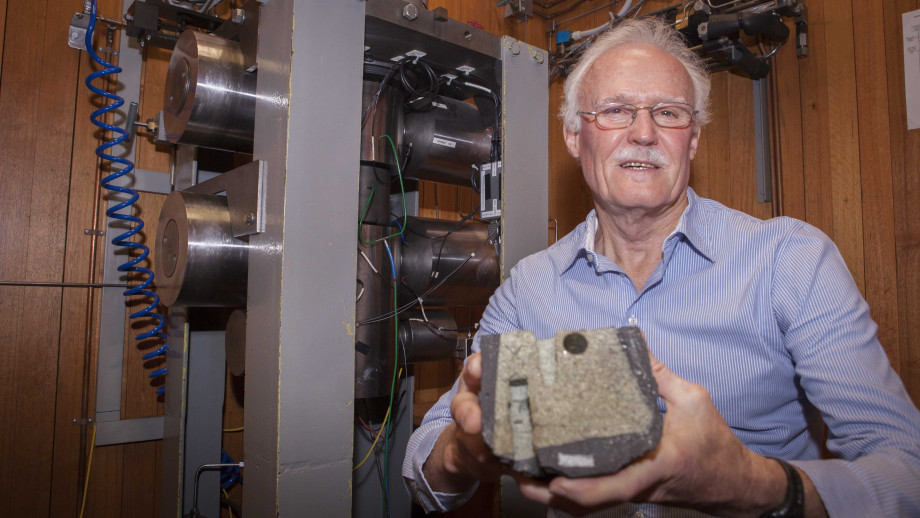
Professor Ian Jackson with a fragment of the Earth's upper mantle, peridotite (green rock inside the black material), brought from around 30km depth within a basaltic magma. Image Credit: ANU
C. J. Cline II, U. H. Faul, E. C. David, A. J. Berry & I. Jackson. Redox-influenced seismic properties of upper-mantle olivine. Nature, 2018 DOI:10.1038/nature25764

Breeding Trouble: Meta-Analysis Identifies Fishy Issues With Captive Stocks
March 13, 2018: University of SydneyA group of researchers based at the University of Sydney has uncovered patterns that may be jeopardising the long-term success of worldwide animal breeding programs, which increasingly act as an insurance against extinction in conservation, and for food security.
The meta-analysis, led by the University of Sydney's Faculty of Science, found captive-born animals had, on average, almost half the odds of reproductive success compared to their wild-born counterparts in captivity.
In aquaculture, the effects were particularly pronounced, although research and conservation programs showed the same trend.
The study analysed more than 100 results, from 39 animal studies of 44 diverse species including shrimp, fish, mice, ducks, lemurs and Tasmanian devils.
The paper, "A meta-analysis of birth-origin effects on reproduction in diverse captive environments", is published today in Nature Communications.
Dr Catherine Grueber, who supervised the study, said the team was surprised at how universal the patterns were.
"More than 2,000 threatened species rely on successful reproduction through captive breeding programs for conservation alone," said Dr Grueber, from the University of Sydney's School of Life and Environmental Sciences and San Diego Zoo Global.
"In order to maintain our food supply, it's crucial we improve captive breeding; for example, the aquaculture industry is looking at introducing new species for commercialisation."
Lead author, PhD student Ms Kate Farquharson, said the results provide opportunities for improving the long-term success of animal breeding programs.
"Our dataset included measurements of lots of different reproductive traits - such as fertility, number of offspring, and timing of reproduction - but found that certain traits, such as offspring weight and mothering ability, seem to be the most strongly affected," Ms Farquharson said.
"This provides an opportunity for animal breeding programs, by identifying the areas where improvement could boost sustainability."
Research manager at the University of Sydney's Australasian Wildlife Genomics Group, co-author Dr Carolyn Hogg, said the research could be extended by undertaking multi-generational studies.
"Identifying limitations as well as opportunities in captive breeding programs across all industries is an urgent priority," Dr Hogg said.- The study covered animal breeding programs in aquaculture, conservation and research. It included invertebrates, fish, birds and mammals.
- Across the animal kingdom, captive-born animals were found to average 42 percent decreased odds of reproductive success, compared to those that are wild-born.
- Considerable research has explored differences between captive and wild populations; less attention has been given to finding patterns across species.
- In conservation, captive breeding has been recommended by the International Union for the Conservation of Nature (IUCN) Red List assessors for 2199 species to reduce the threat of extinction.
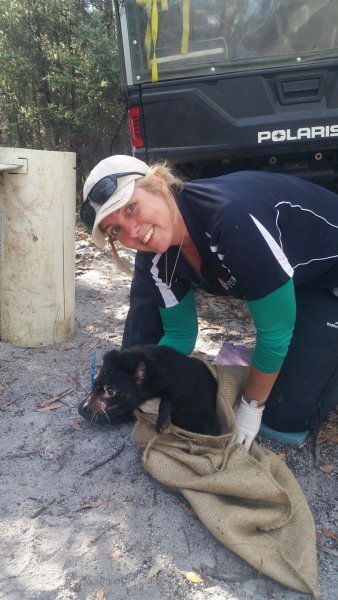
Co-author Dr Carolyn Hogg working with released captive born devils on Maria Island in Australia's state of Tasmania.Credit: Phil Wise took the photo on Dr Hogg's camera.
Katherine A. Farquharson, Carolyn J. Hogg, Catherine E. Grueber. A meta-analysis of birth-origin effects on reproduction in diverse captive environments. Nature Communications, 2018; 9 (1) DOI: 10.1038/s41467-018-03500-9
- The study covered animal breeding programs in aquaculture, conservation and research. It included invertebrates, fish, birds and mammals.
- Across the animal kingdom, captive-born animals were found to average 42 percent decreased odds of reproductive success, compared to those that are wild-born.
- Considerable research has explored differences between captive and wild populations; less attention has been given to finding patterns across species.
- In conservation, captive breeding has been recommended by the International Union for the Conservation of Nature (IUCN) Red List assessors for 2199 species to reduce the threat of extinction.

Coral Reef Experiment Shows: Acidification From Carbon Dioxide Slows Growth
March 14, 2018: Carnegie Institution for ScienceOcean acidification will severely impair coral reef growth before the end of the century if carbon dioxide emissions continue unchecked, according to new research on Australia's Great Barrier Reef led by Carnegie's Ken Caldeira and the California Academy of Sciences' Rebecca Albright.
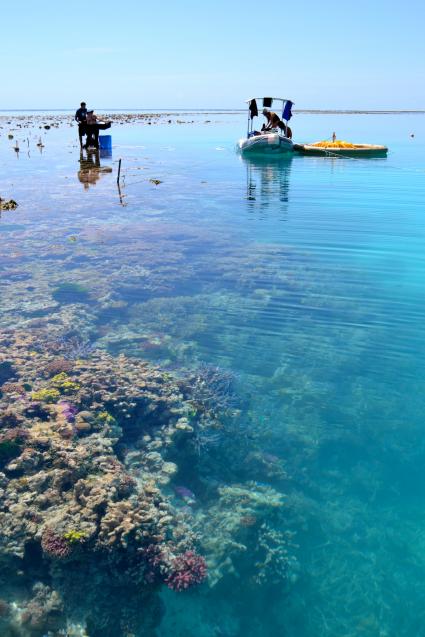
Experimental set-up and research team at a coral reef flat study site at One Tree Island in Australia's Great Barrier Reef. The studies conducted here represent the first ocean acidification experiment of a natural coral reef community, providing evidence that near-future ocean acidification projections severely depressed coral reef growth. Photograph is courtesy of Aaron Takeo Ninokawa of UC Davis.
Their work, published in Nature, represents the first ocean acidification experiment in which seawater was made artificially acidic by the addition of carbon dioxide and then allowed to flow across a natural coral reef community. The acidity of the seawater was increased to reflect end-of-century projections if carbon dioxide from greenhouse gas emissions are not abated.
Two years ago, Caldeira and Albright, then at Carnegie, published a landmark study providing evidence that ocean acidification is already slowing coral reef growth.
In that work, they made a coral reef community's seawater chemistry more alkaline -- essentially giving the reef an antacid -- and demonstrated that the coral's ability to construct its architecture was improved under these conditions. It was the first time that seawater chemistry was experimentally manipulated in a natural coral reef environment.
They once again altered seawater chemistry of reef flats surrounding One Tree Island off the coast of Australia. But this time they gave the reef heartburn, increasing acidity by adding carbon dioxide to seawater flowing over a coral reef community.
"Last time, we made the seawater less acidic, like it was 100 years ago, and this time, we added carbon dioxide to the water to make it more acidic, like it could be 100 years from now," Caldeira explained.
When coal, oil, or gas is burned, the resulting carbon dioxide is released into the atmosphere. It is well established that these emissions are the culprit of global climate change, the warming from which has a negative impact on coral reefs. But this atmospheric carbon is also absorbed into the ocean, where it remains for millennia.
A chemical reaction between the seawater and these soaked-up carbon emissions produces carbonic acid, which is corrosive to coral reefs, shellfish, and other marine life. Reefs are especially vulnerable to this ocean acidification, because their skeletons are constructed by accreting calcium carbonate, a process called calcification. As the surrounding water becomes more acidic, calcification becomes more difficult.
"Our findings provide strong evidence that ocean acidification caused by carbon dioxide emissions will severely slow coral reef growth in the future unless we make steep and rapid reductions in greenhouse gas emissions," said first author Albright.
Furthermore, by working in controlled areas of a natural reef community, Caldeira, Albright, and their team were able to demonstrate how acidification affects coral reefs on the ecosystem scale, not just in terms of individual organisms or species, as other studies have done.
They say this approach is crucial to understanding the full scope and complexity of ocean acidification's impact, as well as to predicting how acidification will affect the coastal communities that depend on these ecosystems.
"Coral reefs offer economic opportunities to their surrounding communities from fishing and tourism," Caldeira said. "But for me the reef is a beautiful and diverse outpouring of life that we are harming with our carbon dioxide emissions. For the denizens of the reef, there's not a moment to lose in building an energy system that doesn't dump its waste into the sky or sea."
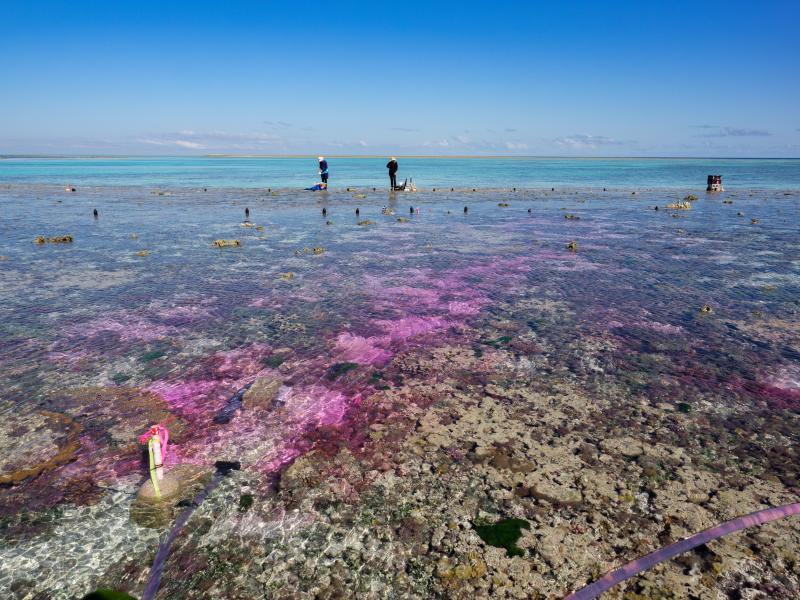
Experimental plume of carbon dioxide-enriched seawater and a dye tracer flowing across a coral reef flat in Australia's Great Barrier Reef. This study represents the first ocean acidification experiment on a natural coral reef community and provides evidence that near-future ocean acidification projections severely depressed coral reef growth. Photograph is courtesy of Aaron Takeo Ninokawa of UC Davis.
Jeffrey B. McQuaid, Adam B. Kustka, Miroslav Oborník, Aleš Horák, John P. McCrow, Bogumil J. Karas, Hong Zheng, Theodor Kindeberg, Andreas J. Andersson, Katherine A. Barbeau, Andrew E. Allen. Carbonate-sensitive phytotransferrin controls high-affinity iron uptake in diatoms. Nature, 2018; DOI: 10.1038/nature25982


Barranjoey-Barrenjoey In 1967 And 1968
from:BARRANJOEY HEADLAND at the entrance to Broken Bay, N.S.W. Palm Beach is on the right, Pittwater on the left.Photograph by Douglass Baglin. AUSTRALIAN ALMANAC (1967, June 14).The Australian Women's Weekly (1933 - 1982), p. 19. Retrieved fromhttp://nla.gov.au/nla.news-article43017248 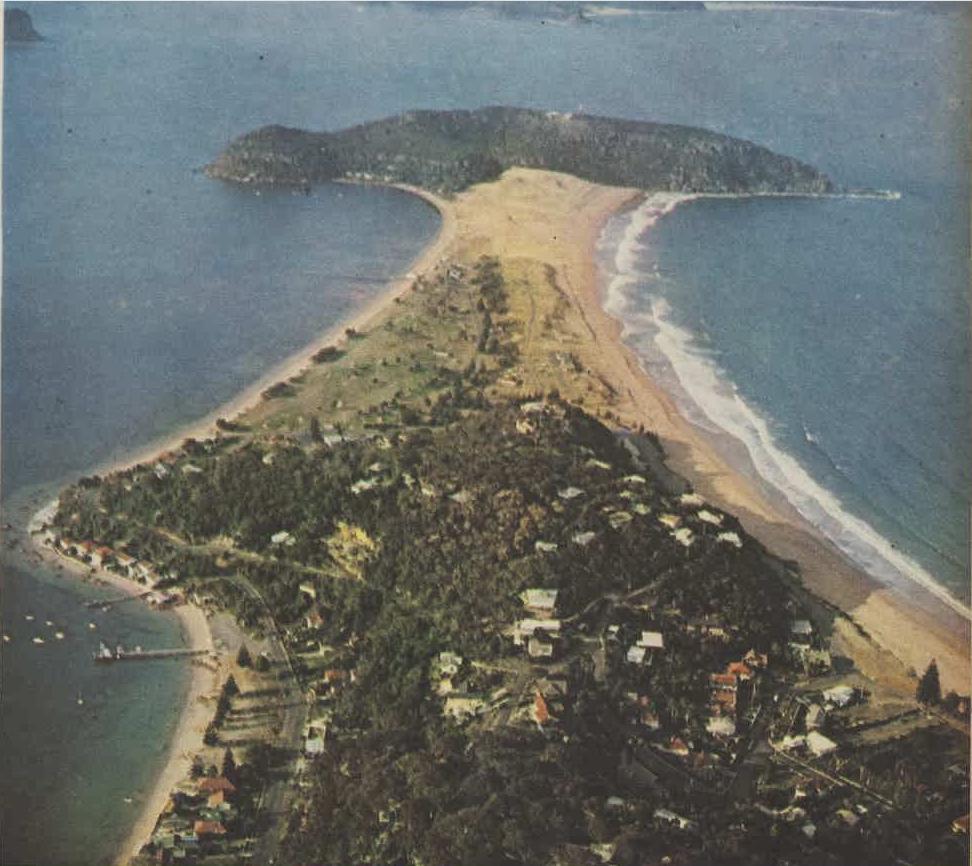 andLAUGHTER AND TEARS IN THE WILDERNESS (1968, February 14). The Australian Women's Weekly (1933 - 1982), p. 15. Retrieved fromhttp://nla.gov.au/nla.news-article51973069
andLAUGHTER AND TEARS IN THE WILDERNESS (1968, February 14). The Australian Women's Weekly (1933 - 1982), p. 15. Retrieved fromhttp://nla.gov.au/nla.news-article51973069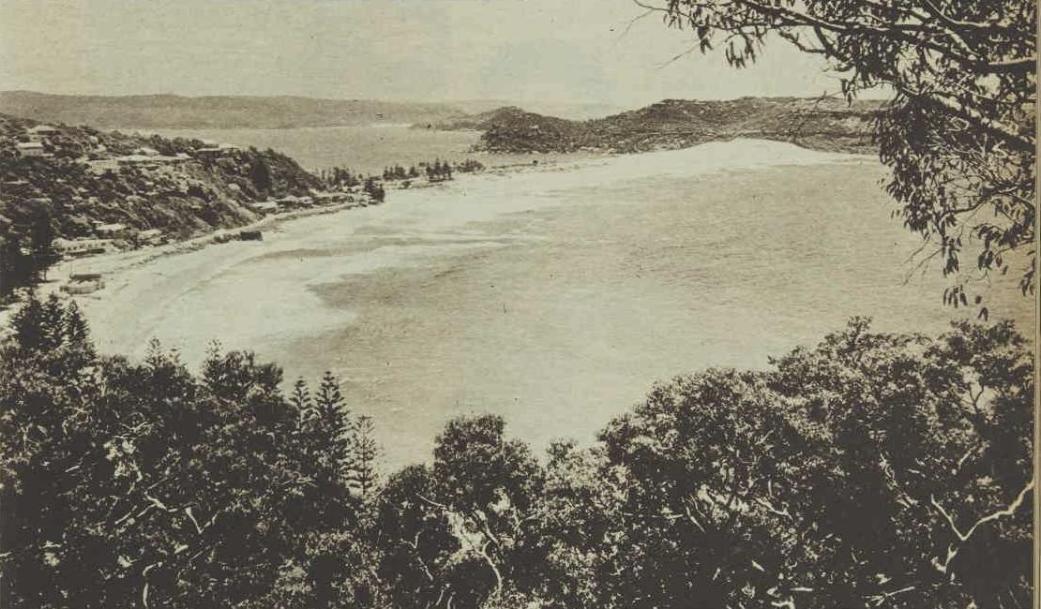


Woolworths Surf Camps Get Underway At Hurley Surfing Australia High Performance Centre (HPC)
CASUARINA/NSW (Thursday, March 16th/2018): from Surfing AustraliaThe Woolworths Surf Camps are underway at the Hurley Surfing Australia High Performance Centre (HPC) in Northern New South Wales.Under 14 Boys winners from the ten Woolworths Surfer Groms Comps presented by Wahu kicked things off first yesterday, March 14th with HPC coaches Samba Mann, Clancy Dawson and Tim Macdonald putting the group through multiple surf sessions on day one.
The ten under 14 Girls winners get their camp underway on March 19th at the HPC with the best and fairest male and female surfers from each camp set to take away a $250.00 Woolworths gift voucher as part of the Woolworths Fresh Wave Awards.
During each camp, the aspiring young athletes will put through their paces with a combination of surfing and video analysis, competition strategies and strength and gymnastic training.
Regarded as one of the major stepping stones in the development of young Australian surfers, the 10-event Woolworths Surfer Groms Comps presented by Wahu caters for surfers from Under 8 to Under 14 and will be held in New South Wales, Queensland, Victoria, Western Australia and South Australia over summer. The prestigious event series will also return to Tasmania in 2017/18.
As an added bonus, the respective winners of the Under 14 boys’ and girls’ divisions from each event will receive an invite to attend an all-expenses-paid, three-day Woolworths Surf Camp at the Hurley Surfing Australia High-Performance Centre (HPC). For the South Australian, Victorian and Tasmanian events, the Woolworths Surf Camp prize will be awarded to the highest place Under-14 Boy and Girl who reside in that respective State.
The Woolworths Surfer Groms Comps presented by Wahu have helped to launch the careers of many of Australia's most promising junior surfers with almost 800 children set to take part in the 2017/18 event series.
Previous champions include Matt Banting, Jacob Willcox, Luke Hynd, Eli Steele, Kai Hing, Chris Zaffis, Quinn Bruce, Ellie-Jean Coffey, Macy Callaghan, Isabella Nichols, Holly Wawn and Laura Poncini.
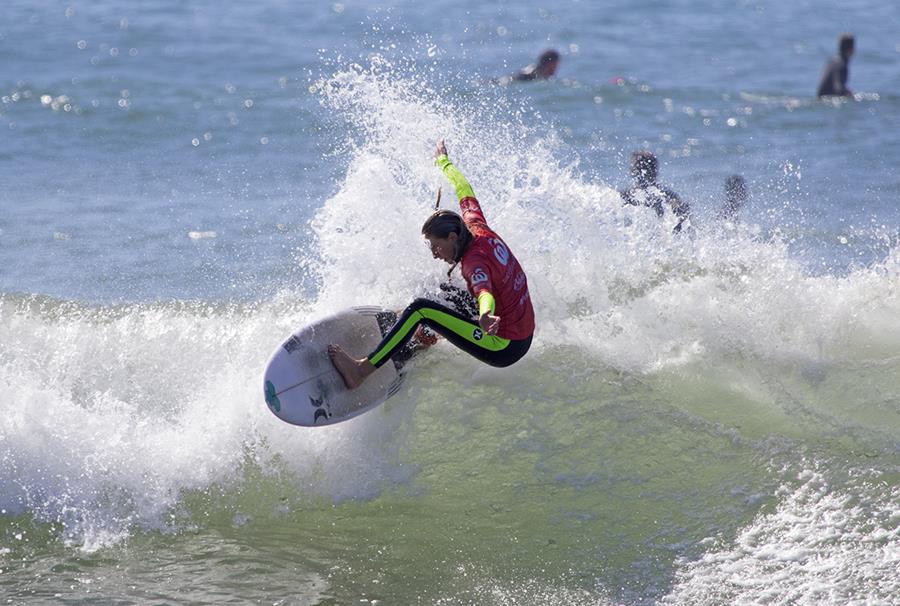
Woolworths Boys Surf Camp 14-16th March Participants:Koda KillornEVENT 1 - Northern Beaches, NSWTaj SimonEVENT 2 - Cronulla, NSWJarvis EarleEVENT 3 - Kiama, NSWTouma CameronEVENT 4 - Coffs Harbour, NSWZeph LamperdEVENT 5 - Ocean Grove, VICKing CairnsEVENT 6 - Fleurieu Peninsula, SAElijah Magner EVENT 7 - Sunshine Coast, QLDMatt BoyleEVENT 8 - Gold Coast, QLDDylan VernonEVENT 9 -Trigg, WAGus LockleyEVENT 10 - Clifton Beach, TAS
Woolworths Girls Surf Camp 19-21st March Participants:Cedar Leigh-JonesEVENT 1 - Northern Beaches, NSWOceania RogersEVENT 2 - Cronulla, NSWHolly WishartEVENT 3 - Kiama, NSWCharlize EverittEVENT 4 - Coffs Harbour, NSWEllie HarrisonEVENT 5 - Ocean Grove, VICImogen ElliottEVENT 6 - Fleurieu Peninsula, SACali BarrettEVENT 7 - Sunshine Coast, QLDLilliana BowreyEVENT 8 - Gold Coast, QLDIsi CampbellEVENT 9 -Trigg, WALily MereszkaEVENT 10 - Clifton Beach, TAS
Photo - Under 14 Girls Woolworths Surfer Groms Comps presented by Wahu Northern Beaches event 1 winner and Woolworths Surf Camp participant Cedar Leigh-Jones. Photo credit: Ethan Smith/Surfing Australia

Paper Run
Made by The Commonwealth Film Unit 1956. Directed by Malcolm Otton. A panorama of scenic beauty unfolds as the newspaper delivery man works his run along Sydney's northern beaches of Newport and the Palm Beach area. Commonwealth Film Unit 1956.Archived and kept for all by the National Film and sound archives
Getting To The Sydney Royal Easter Show From Mona Vale
Sydney Olympic Park Major Event Buses will run each day during the 12-day Sydney Royal Easter Show.
Services start running between 07:00 and 07:30, depending on the route, each day. Services run every 15 to 25 minutes and more frequently during peak times and begin arriving at the precinct from around 08:45 each morning until 17:30 in the evening.
Return services start running from Olympic Park at around 12:45, with the last bus on each route leaving the precinct at 23:00 each night of the Show.Note: scheduled wheelchair accessible buses will travel on each route. Find the closest stop to you using the Major Event Bus interactive map.
Route To / from SOP (Forest Coach Lines)1A Warriewood via Dee Why1B Warriewood via Mona Vale
You can also view:• Sydney Olympic Park major event bus routes map (pdf 940KB)
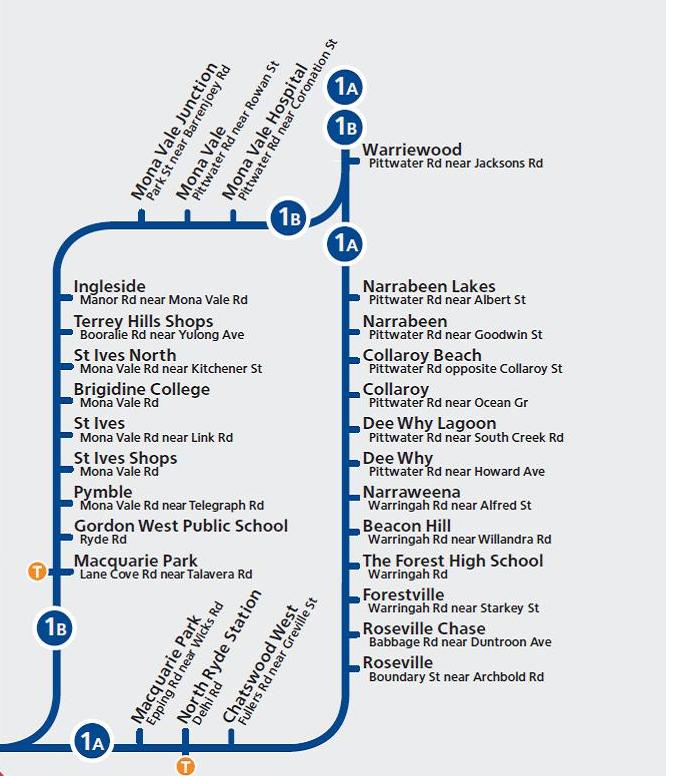
Travel to the Royal Easter ShowAll pre-purchased ShowLink tickets include return public transport for your trip to the Royal Easter Show on any one day.You can pre-purchase your ShowLink ticket on the Sydney Royal Easter Show website. ShowLink tickets are not sold at train stations, ferry wharves or on buses.
Travel public transport with ShowLink ticketsPresent your ShowLink ticket for travel on:- Train services (bounded by Bomaderry (Nowra), Goulburn, Bathurst and Dungog stations)
- Sydney Olympic Park major event buses
- Regular bus services
- Sydney Ferries services
- Light rail services.
Keep your ShowLink ticket for your return trip home as you will need to present your ShowLink ticket or have a valid ticket when travelling on public transport.
IMPORTANT TICKET INFORMATION
ShowLink tickets are not available for purchase on-board transport services or at train stations. ShowLink tickets are only available at selected Woolworths outlets or online via Ticketmaster. Alternatively, you can purchase your ShowLink ticket at the Sydney Showground ticket booths located at the entry gates to the Show, however we strongly encourage you to pre-purchase your ticket where possible as there will be queues.Remember to keep your ShowLink ticket safe for your return trip home as you will need to present your ShowLink ticket or have a valid ticket when travelling on public transport.
Single day, two-day or Twilight (after 4pm entry) ShowLink tickets are available. For more information on all the available ticketing options, seeTicket types. For more information on the terms and conditions that apply to ShowLink tickets on public transport, visit transportnsw.info. Please note there are no exchanges, refunds or cancellations on purchased ShowLink tickets.
Early Bird ShowLink: Available online until 22 March 2018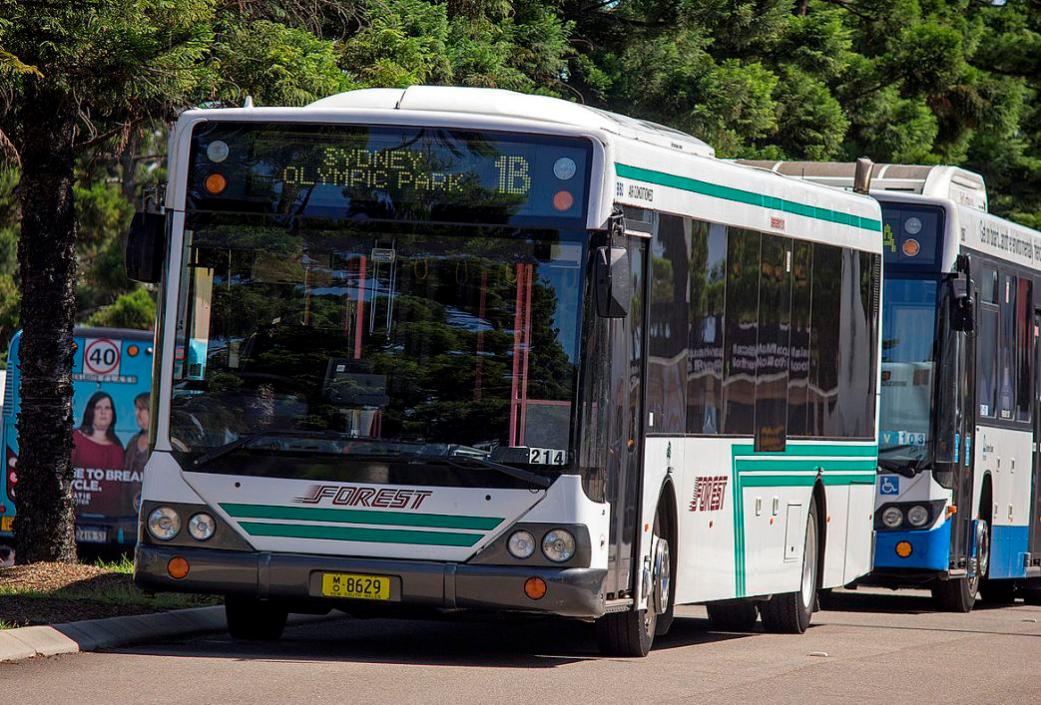

- Train services (bounded by Bomaderry (Nowra), Goulburn, Bathurst and Dungog stations)
- Sydney Olympic Park major event buses
- Regular bus services
- Sydney Ferries services
- Light rail services.

Wildlife Photographer Of The Year Exhibition
The world-renowned exhibition, on loan from the Natural History Museum in London, will open at the Australian National Maritime Museum on 13 April 2018 in time for the school holidays. The 100 extraordinary images celebrate the diversity of the natural world, from intimate animal portraits to astonishing wild landscapes.
Wildlife Photographer of the Year is the most prestigious photography event of its kind, providing a global platform that showcases the natural world’s most astonishing and challenging sights for over 50 years.
Winning images are selected for their creativity, originality and technical excellence. Launching in 1965 and attracting 361 entries, today the competition receives almost 50,000 entries from 92 countries highlighting its enduring appeal. This year’s 100 award-winning images will embark on an international tour that allows them to be seen by millions of people.
Sir Michael Dixon, Director of the Natural History Museum, says ‘Wildlife Photographer of the Year is one of our most successful touring exhibitions, enjoyed by millions of people all over the world. The awarded images shine a spotlight on nature photography as a work of art, whilst raising questions about our crucial role in shaping a sustainable future.’
Kevin Sumption, director of the Australian National Maritime Museum, said the Wildlife Photographer of the Year exhibition held broad appeal due to its rich subject matter showcasing the diversity of life. “This is one of the most innovative and popular photographic competitions of its kind and we are delighted that Sydney audiences can once again enjoy these unforgettable and inspiring images at the Australian National Maritime Museum.”
And to make the exhibition extra special Sydney visitors can also come face to face with equipment used by celebrated Australian shark photographers Ron and Valerie Taylor and experience the brand new Oceans 3D film which runs in the museum’s theatre (check the museum’s website for schedule).
The 53rd Wildlife Photographer of the Year Exhibition is a featured exhibition of Head On Photo Festival 2018 and opens on 30 March 2017. Exhibition labels are available digitally in six languages. Tickets are $20 adults, $12 concessions/children and $50. For further information about the exhibition visit www.anmm.gov.au/wildlife.
The Australian National Maritime Museum, in Darling Harbour, is open from 9.30am to 5pm daily. All enquiries (02) 9298 3777 or visit www.anmm.gov.au.
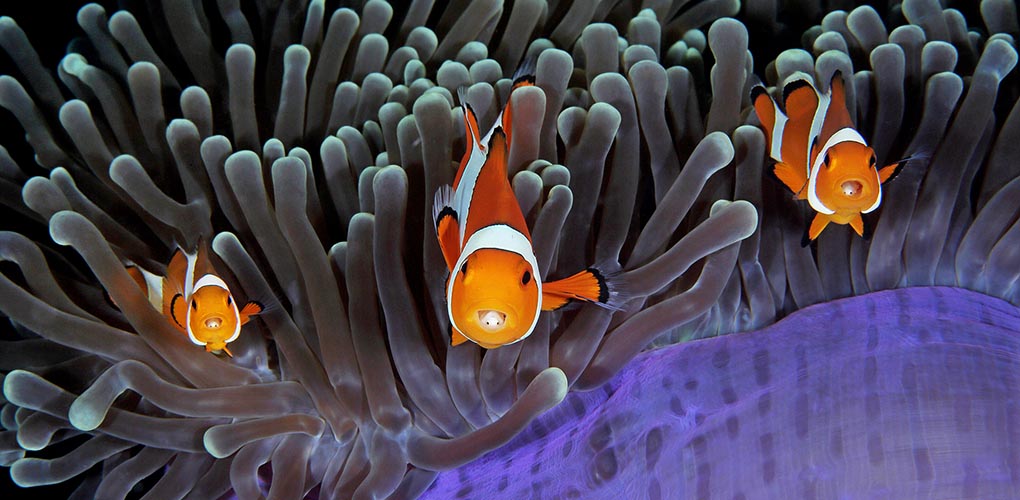
Image: © Qing Lin - The Insiders

Taking Action: Strengthening Aged Care Homes Quality Compliance
March 17, 2018: The Hon Ken Wyatt AM, MP, Minister for Aged Care
From today, unannounced quality and safety audits will come into force across all Australian residential aged care homes, as the Turnbull Government builds on its aged care reforms.The Aged Care Minister, Ken Wyatt AM, said enactment of the Australian Aged Care Quality Agency Legislation Amendment (Unannounced Reaccreditation Audits) Principles 2018 means homes will no longer be given notice of the date of their re-accreditation audit.
“Our commitment to safe, high-quality care is non-negotiable and I am sure is shared by all Australians,” said Minister Wyatt.
“These changes will strengthen the oversight of aged care services to provide greater assurance that standards of care are consistently maintained, not just at re-accreditation times”.
“While the vast majority of Aged Care homes provide excellent service all year, this reform is designed to give residents and their families’ greater confidence in care delivery.”
Minister Wyatt signalled the Government’s intention to introduce unannounced re-accreditation audits by the Australian Aged Care Quality Agency when he released the Review of National Aged Care Quality Regulatory Processes last October. This enhancement to the audit system was a key recommendation.
“The introduction of unannounced accreditation audits builds on existing unannounced compliance monitoring by the Quality Agency,” Minister Wyatt said.
“Since October, the Agency has conducted over 1,500 unannounced assessment visits on homes, targeting specific quality standard requirements.
“The Quality Agency has also increased its focus on broader areas of risk, conducting unannounced review audits of all 44 required quality outcomes at 22 homes. Since July 2017, five homes have had their accreditation revoked.”
To maintain their approval to receive Commonwealth funding, aged care homes must comply with four standards comprising 44 required outcomes, ranging from clinical care, nutrition and hygiene to dignity, privacy and security.
The new reforms to re-accreditation audits also include:Improved avenues for resident and family feedbackTighter profiling of homes to identify potential care and safety risksSelf- assessment of performance prior to the audit“Every senior Australian deserves to be treated with dignity and to receive the best care and I am committed to working with providers and everyone involved in this vital sector to ensure Australia continues to provide world-class aged care,” Minister Wyatt said.
The audit reform amendments relate to functions established under the Australian Aged Care Quality Agency Act 2013.
More information on unannounced re-accreditation audits can be found on the Department of Health website athttps://agedcare.health.gov.au/ensuring-quality
Information can also be found at the Quality Agency website https://www.aacqa.gov.au/providers/news-and-resources/moving-to-unannounced-audits
The Quality Agency publishes accreditation and compliance decisions and resident feedback results on its website www.aacqa.gov.au.
The report on the Review of National Aged Care Quality Regulatory Processes can be found at agedcare.health.gov.au/quality/review-of-national-aged-care-quality-regulatory-processes-report
NSW Government Strategy Drives Healthy And Creative Ageing
14 March, 2018: Media release - The Hon. Tanya Davies MP
Minister for Mental HealthMinister for WomenMinister for Ageing
More innovative and evidence based projects that will be implemented to improve the lives of older people in NSW, have today been released as part of the NSW Ageing Strategy 2016-2020 Year Two Action Plan.
Minister for Ageing Tanya Davies launched the Year Two Action Plan along with the Year One Progress Report, which outlines achievements so far of the NSW Government’s Ageing Strategy.
“Since introducing the Strategy in 2016, we have made real progress towards our vision to offer more opportunities for older people to participate in our communities,” Mrs Davies said.
“The NSW Government has built strong partnerships with businesses and organisations that foster inclusion and support older people to lead happy, healthy lives, and the Year Two Action Plan will help us to continue this work.”
Mrs Davies released the reports at the official opening of the 2018 Art of Ageing exhibition, held today at NSW Parliament, before the photography exhibition tours the state.
Art of Ageing is one of 55 projects in the Year Two Action Plan and aims to combat negative perceptions of ageing and older people.
“Misconceptions about the lives of older people are prevalent in our community but the experience of ageing is unique. Many older people are artists, athletes, business owners, farmers and volunteers, and this Exhibition challenges people’s perceptions,” Mrs Daviessaid.
Targets under the Year Two Action Plan include an expansion of the modified sports program Getting Active, developing strategies to recruit older workers in the NSW public service.
The Year One Progress Report outlined achievements from targeted programs such as 4,600 seniors completing the Stepping On program to reduce their risk of falls and around 20,000 seniors improved their technology skills through the Tech Savvy Seniors program.
The Year One Progress Report and Year Two Action Plan can be viewedonline here.
The 2018 Art of Ageing exhibition artworks, stories and photographer biographies can be viewed online here.
Beating The Flu Bug: "It's In Your Hands"
13 March 2018: NSW HealthA $1.75 million campaign to tackle the flu season will urge people to get their jab early and clean their hands regularly to avoid a repeat of last year’s influenza epidemic. Health Minister Brad Hazzard said the 2018 flu campaign focuses on four simple measures to beat the bug, which affected more than 128,000 people in NSW last year. “The Don’t Spread Flu – It’s In Your Hands campaign has some straightforward messages on how to limit the spread of influenza and help save lives,” Mr Hazzard said. “More than 650 people died in NSW from influenza last year. It should be a wake-up call to the community to take steps to protect yourself and your loved ones. “Like our campaign says it’s in your hands, so get your flu shot early, cough into your elbow not your hands, wash your hands regularly and stay at home if you are sick.” The NSW Government will spend a record $22.75 million on immunisation programs in 2017-18, including $3.5 million for free flu shots to children up to five years of age. As part of the 2018 campaign, UV light “germ detectors” will be set up at some transport hubs and shopping centres so people can test their hand cleanliness. NSW Health’s Chief Health Officer Kerry Chant said frequent hand washing is one of the first lines of defence against another flu epidemic, together with early vaccination. “The World Health Organisation advises this year’s flu vaccine will be a better match to the four circulating strains and offer higher protection than last year,” Dr Chant said. “We urge people to get their flu jab when the vaccine is available in April to ensure they are protected ahead of time, as the vaccine takes two weeks to be fully effective.” Flu shots are free for pregnant women, children up to five years of age and people over 65 years of age, Aboriginal people and those with medical conditions such as asthma, diabetes and heart problems. How you can help fight the spread of flu:- get your flu shot
- cough and sneeze into your elbow
- clean your hands
- stay home when sick.
View the NSW 2018 Influenza and Immunisation Campaign for more information.
- get your flu shot
- cough and sneeze into your elbow
- clean your hands
- stay home when sick.
2016 Census Homelessness Estimates
Gun Laws Stopped Mass Shootings In Australia: New Research
Big Tobacco Is Targeting The World's Most Vulnerable To Increase Profits, Report Finds
- In spite of the tobacco industry's efforts to impede progress, global cigarette consumption and tobacco use prevalence have declined recently thanks to an overall increase in the adoption of proven and innovative tobacco control measures. Tobacco taxes alone could deliver a 30% relative reduction in smoking prevalence by 2025. This would save 38 million lives and $16.9 trillion, just from former smokers becoming healthier.
- In 2013, the Philippines implemented one of the largest tobacco tax increases in a low and middle income country, leading more than 1 million smokers to quit. Kenya implemented a successful track and trace system for tobacco products, which helped to stem the illicit market.
- Turkey's comprehensive tobacco control strategy reduced smoking prevalence from 39.3% in 2000 to 25.9% in 2015.
- Analysis by Australia's government found that plain packaging alone resulted in 108,228 fewer smokers between December 2012 and September 2015.
- Brazil has banned all tobacco additives such as flavors used to attract children. WHO predicts that there will be 3 million fewer smokers in Brazil between 2015 and 2025.
Saving Lives With Platypus Milk
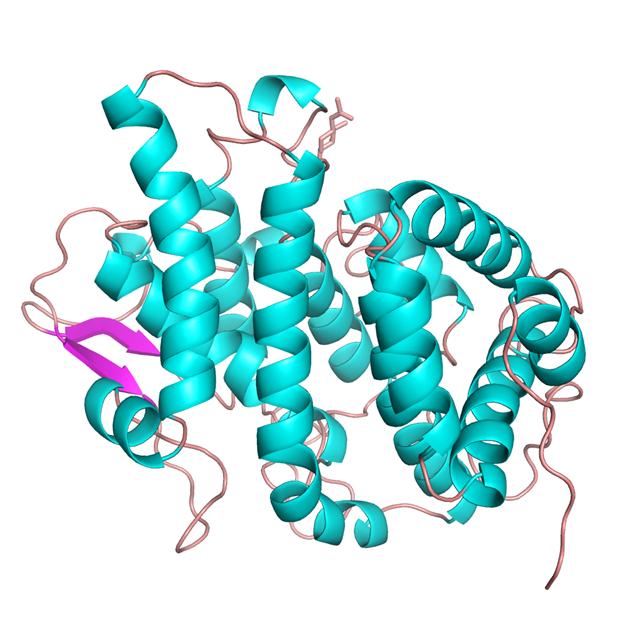
Beating The Flu Bug: "It's In Your Hands"
- get your flu shot
- cough and sneeze into your elbow
- clean your hands
- stay home when sick.
Australian Submariners To Breathe Easier
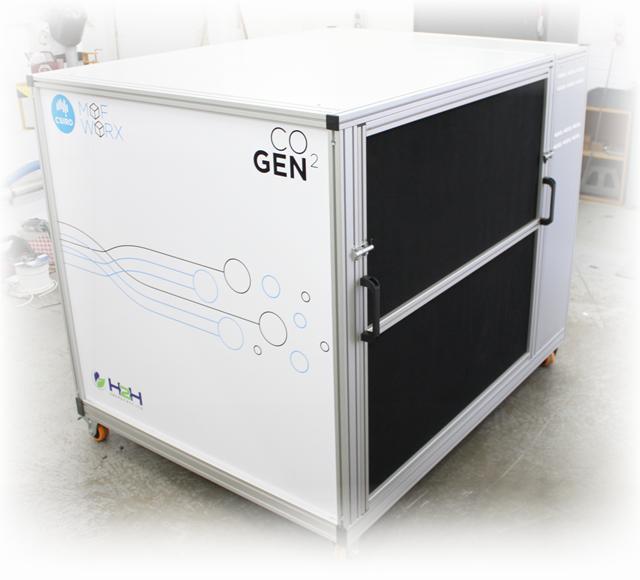
Apply For An Investing In Women 2018 Grant
- women’s economic opportunity and advancement
- equitable workplaces for women and men
- women in small business
- women in science, technology, engineering and mathematics (STEM) careers
- women in male-dominated trades
- women in leadership roles
- leadership pathways for young women.
Disclaimer: These articles are not intended to provide medical advice, diagnosis or treatment. Views expressed here do not necessarily reflect those of Pittwater Online News or its staff.